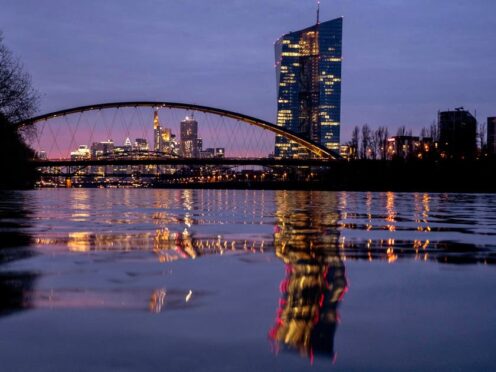
The inflation that has squeezed European shoppers fell more than expected in March to 2.4%, as cost spikes in the grocery aisle eased and overall price rises headed down in the two biggest economies, Germany and France.
The annual figure for the 20 countries that use the euro currency came in below the 2.5% predicted by financial markets and brings the European Central Bank (ECB) ever closer to its inflation goal of 2%.
But analysts say the decline from 2.6% in February, though welcome, would probably not be enough to move up the first interest rate cut from the ECB.
The bank will meet on April 11 but the first reduction in borrowing costs is not expected until June despite an economy that is failing to grow, several analysts said.
What do consumers in the euro area expect will happen to inflation, their incomes, their spending and the value of their homes 12 months from now? We’ve published the latest results of our Consumer Expectations Survey. Press release https://t.co/hoziIHQEf5 pic.twitter.com/CfhsbIaVGh
— European Central Bank (@ecb) April 2, 2024
Food inflation fell to 2.7% from 3.9%, and energy prices dropped by 1.8%, according to Eurostat, the European Union’s statistics agency.
Meanwhile, core inflation, which excludes volatile food and energy costs, eased to 2.9% from 3.1% in February.
Inflation fell to 2.3% in Germany from 2.7% the month before and to 2.4% in France from 3.2%. The data from Germany – the eurozone’s largest economy – “brings some relief for the ECB”, said Carsten Brzeski, global head of macro at ING.
But prices for services, which include everything from film tickets to medical care, are still high.
The ECB will also want to see the latest numbers on wage increases, meaning that “as long as the economy doesn’t fall off a cliff, the ECB will sit tight next week, waiting for more data and the June meeting”, he said.
The US Federal Reserve also is expected to cut rates later this year. Fed officials have pencilled in three rate cuts, even as the decline in inflation there has slowed.

In Europe, inflation spiked to a record high of 10.6% in October 2022 after Russia cut off most of its natural gas to the continent over the war in Ukraine, sending energy prices skyrocketing and driving a cost-of-living crisis.
Along with losing that affordable supply of gas needed to heat homes, generate electricity and power factories, the rebound from the pandemic also strained supply chains, helping push up inflation.
Those price pressures have eased, but now workers are pressing for higher pay to make up for lost purchasing power. That has slowed the decline in inflation and left the ECB wary of cutting interest rates too soon.
The ECB rapidly raised its key rate from minus 0.5% to a record-high 4% between July 2022 and September 2023. Raising interest rates fights inflation by making credit to buy things more expensive, driving down spending and easing pressure on prices.
But rate hikes also can hinder economic growth, and the focus has now has turned to when the ECB will declare victory over inflation and start cutting rates to support the stalled economy.
The eurozone economy did not grow in the last three months of 2023, and figures for the first three months of this year are due on April 30.

Enjoy the convenience of having The Sunday Post delivered as a digital ePaper straight to your smartphone, tablet or computer.
Subscribe for only £5.49 a month and enjoy all the benefits of the printed paper as a digital replica.
Subscribe